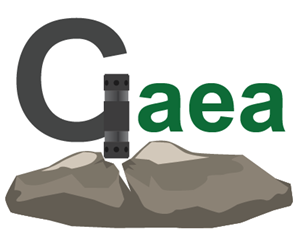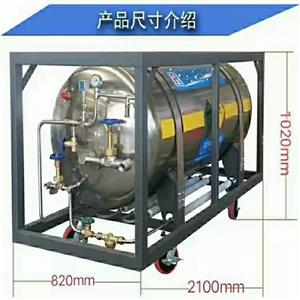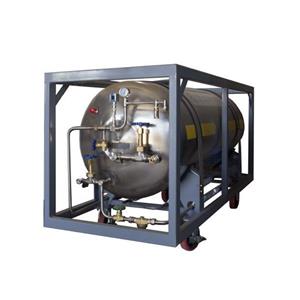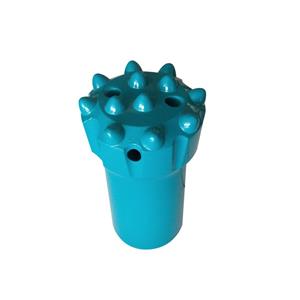Causes of common failures of down-the-hole drilling rigs and their solutions
1. Broken drill pipe(extension rod):
Reason: In most cases, it is due to friction between the drill pipe(extension rod) and the hole wall, which reduces the thickness of the drill pipe(extension rod) and weakens its strength. In addition, the drill pipe(extension rod) is bent and easily broken.
Preventive treatment: pay attention to inspection when adding drill rods, and select the drill rods with excessive wear and bending, and stop using them.
2. The impactor(dth hammer) does not sound
There are four common reasons: 1. The chip is broken; 2. The tail of the drill head is broken, and the slag enters the cylinder block and gets stuck; 3. The exhaust hole is blocked by rock dust; 4. When the rock is drilled downward, the hole There is too much water inside, the exhaust resistance is too large, and the impactor(dth hammer) is not easy to start.
Treatment method: When the impactor does not sound, check according to the fourth reason first. The check method is to lift the impactor a certain distance to reduce the exhaust resistance, blow out a part of the water, and then slowly push it to the bottom of the hole. When it fails, the first three reasons can be judged, and the impactor(dth hammer) needs to be removed for cleaning or replacement parts.
3, stuck:
Reason: In addition to the complex formation that can cause the machine to jam during normal drilling, there are also the following reasons. 1. The wing of the drill bit is broken; 2. The new drill bit is larger than the original diameter; 3. The machine is displaced or the drilling tool is deflected in the hole during rock drilling; To large fissures and karst caves; 5. Dust is not easy to be discharged in areas with mud and rocks; 6. Negligence in operation. When drilling is stopped for a long time, the rock dust is not blown off, and the drilling tool is not lifted, so that the impactor is buried by the rock dust ;
Treatment method: As far as the strength of the current drill bit is concerned, broken wings have been basically eliminated. In case of special circumstances, a seamless pipe with a diameter similar to the hole diameter can be used. The pipe is filled with butter, asphalt, etc., connected with the drill pipe to enter the bottom of the hole. , Take out the broken wing at the bottom of the hole, and blow off the rock dust at the bottom of the hole before salvaging. In more serious cases, the drill tool cannot be lifted, put down, and the impactor does not sound. At this time, only torque or auxiliary tools can be used to help the drill to rotate, and then the drill must be lifted while air is supplied until it fails. Until it is lifted. When re-drilling, first apply a little pressure, and then gradually increase the propulsion force until the normal working pressure is reached.
4. Bit fragments, dropped corners and dropped columns:
When the drill pipe jumps, it is possible to drop stones through the exchange of rock formations or drop the alloy column. Judging from the appearance, if the alloy column is dropped, there is almost no footage, and the drill pipe jumps more rhythmically. When it is confirmed that the alloy column is removed, it can be blown out with a strong blowing method. When the alloy column is too large to blow, it can also be used to handle the broken wing of the drill bit. If there is a fault or broken zone in the hole, the wall of the hole that squeezed the alloy column into these places may not be taken out, replaced with a new bit, and drilled intermittently.




